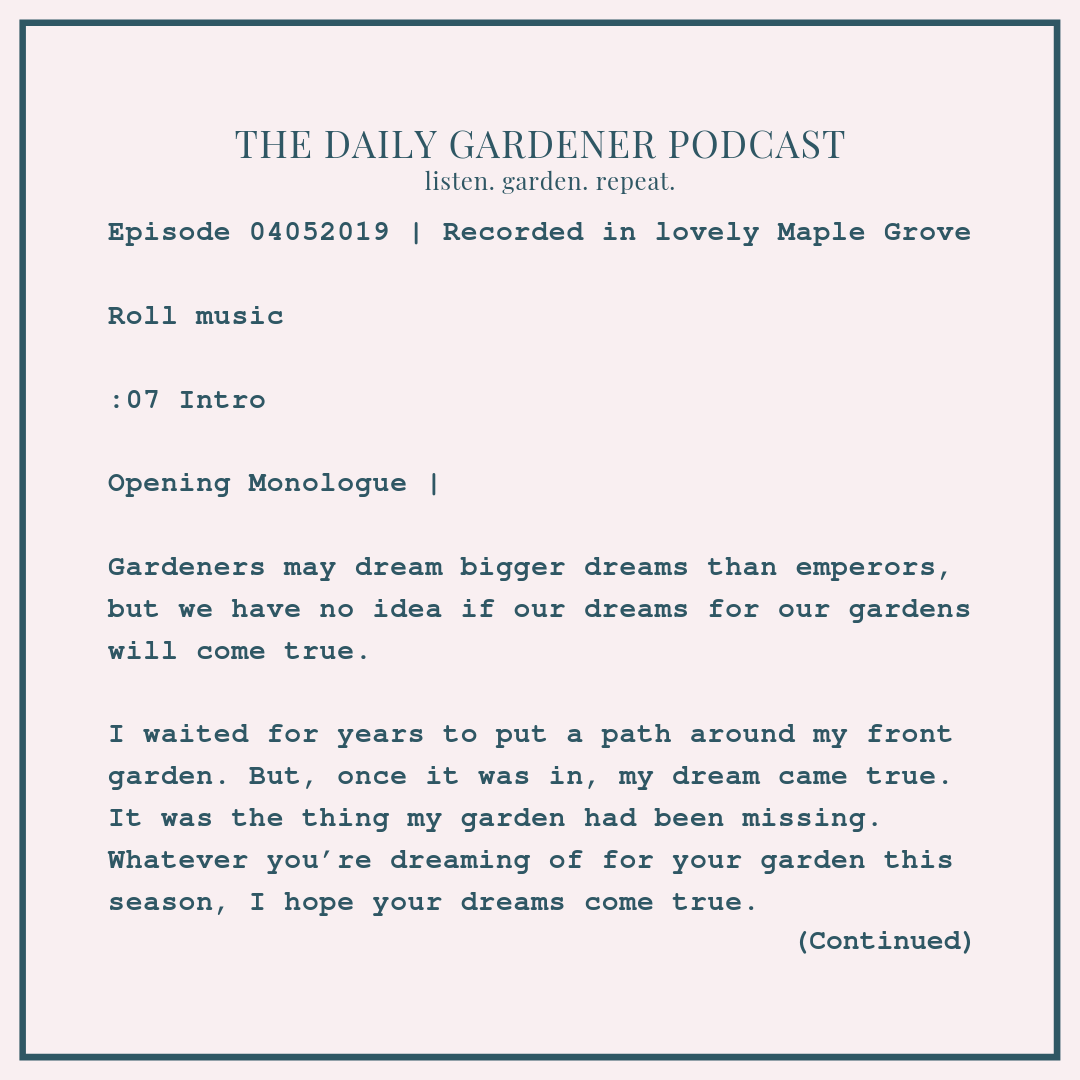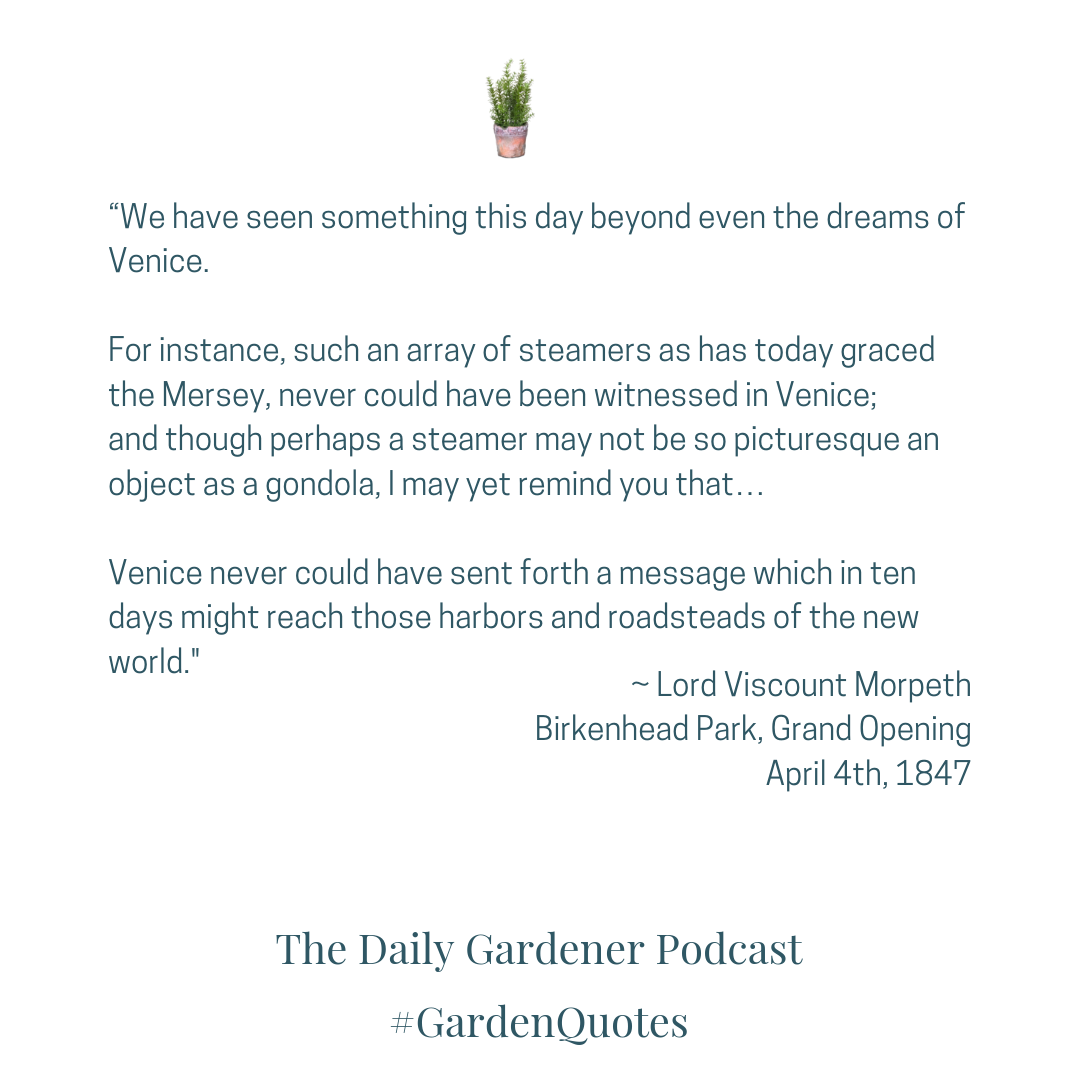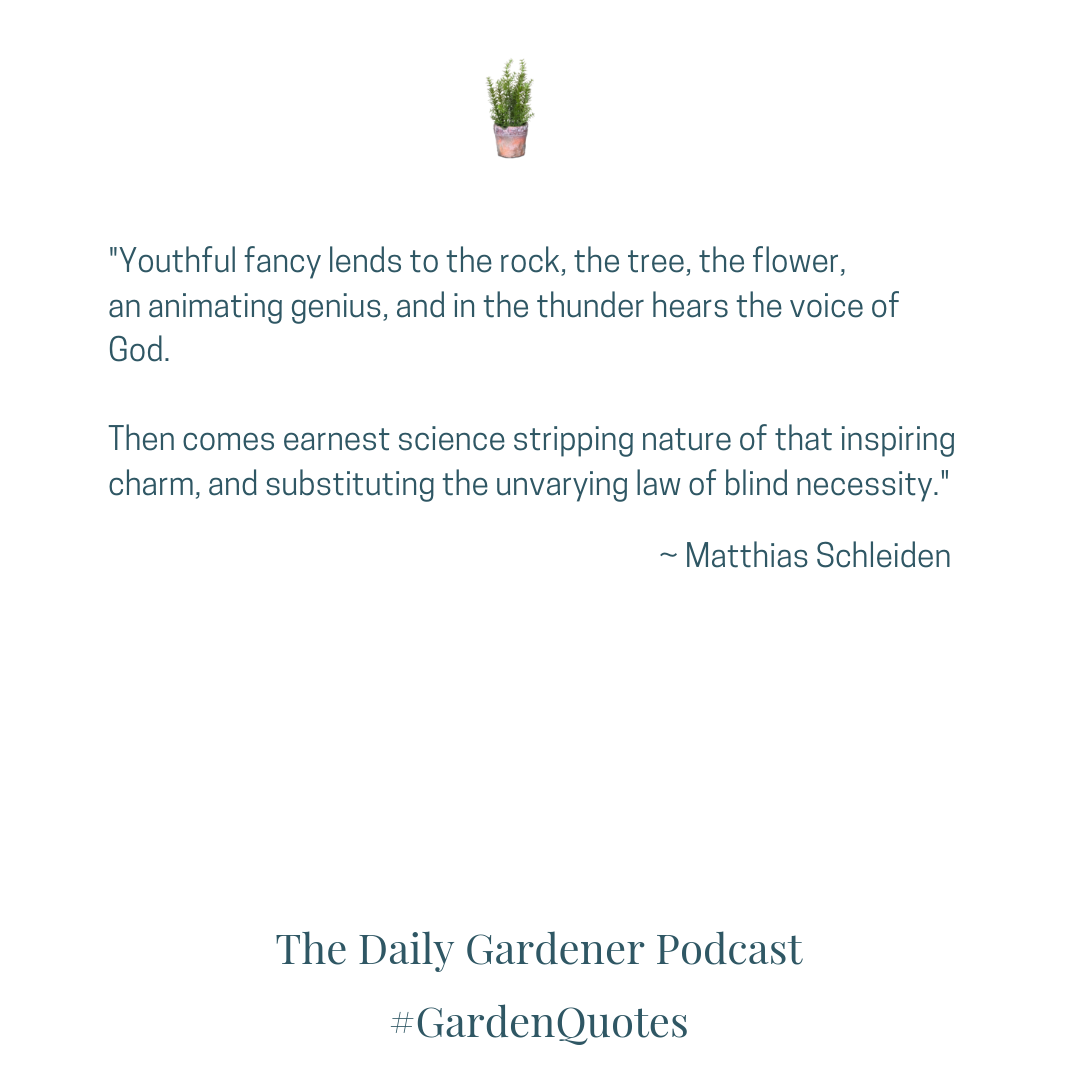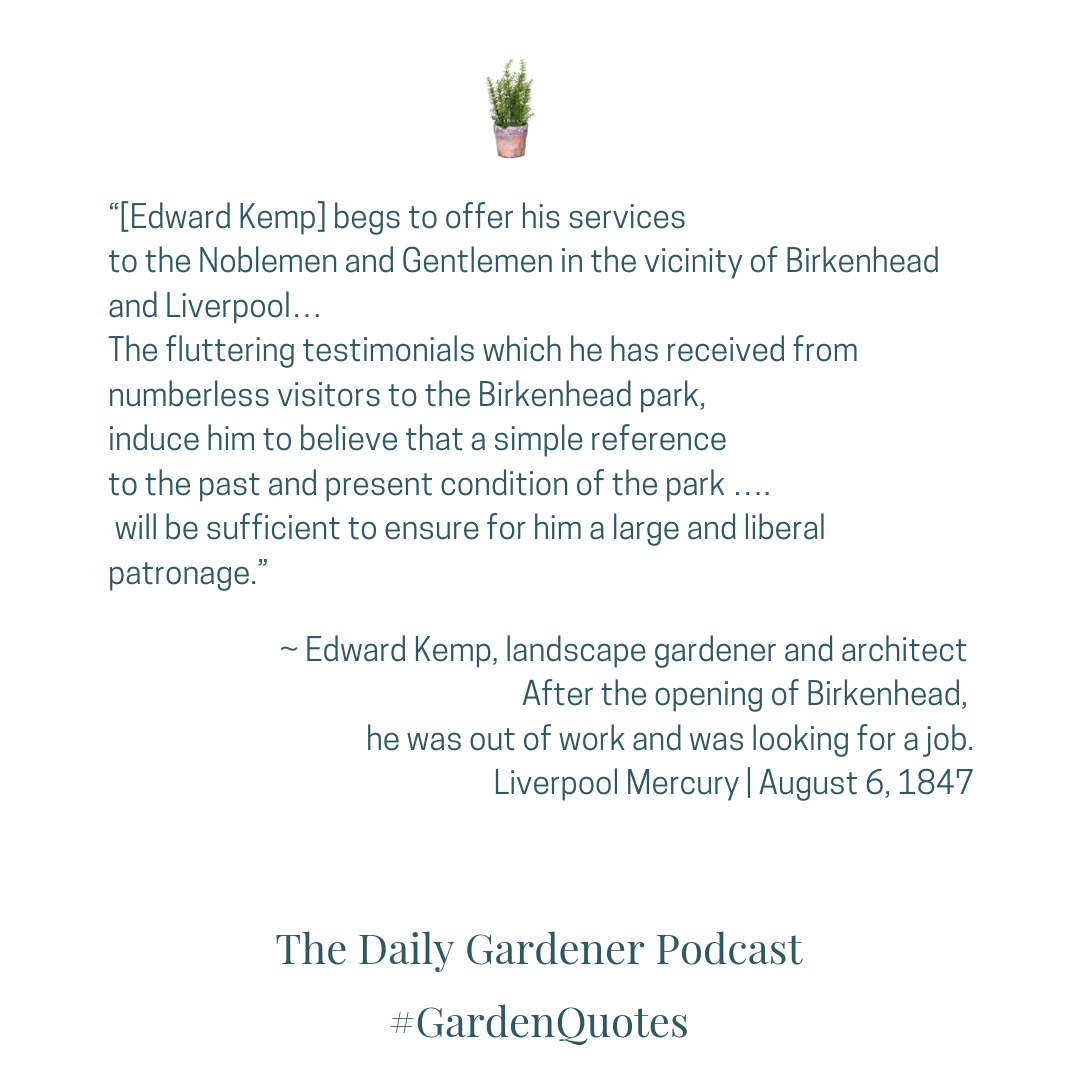September 12, 2019 Charmed by Yellow Wax-Bells, Daniel Cady Eaton, Arthur Shurcliff, Chinese Wilson, Agatha Christie, Beverley Nichols, Lemon Herbs by Ellen Spector Platt, Hanging Basket Tidy Up , and a Record-Setting Apple from 1843
How's your garden doing? Is there something blooming that is stealing your heart?
In my garden, I'm especially enjoying the Yellow wax-bells or Kirengeshoma palmata
("kih-ren-gesh-OH-mah palm-AY-tah").
Heidi Heiland installed these for me last summer during my garden renovation. They are right up by my front door in a North-facing garden - and I see them every day as I go in and out the front door.
I have to say that this plant has slowly won my heart. All season, I watched this perennial grow into a clump of maple-leaves (the leaves look just like the maple tree but smaller and a lighter green.) Then as August comes on, you begin to see these pendulous pale yellow buds. They are quite enchanting, and they hang there through September.
Fine Gardening describes the plant this way:
"This hardy, clump-forming perennial bears pendulous, shuttlecock-shaped soft-yellow blossoms in late August and early September. The plant has attractive, glossy, 4- to 8-inch-long, maple-leaf-shaped leaves.
Noteworthy Characteristics This unusual flowering perennial is native to mountainous areas of Japan and Korea. Survives the -20ºF winters of USDA Zone 5, as well as winters of warmer climates.
Care Grow in rich, moist, acidic soil. Shelter from wind."
Anyway, when you think of yellow blossoms in the garden, that spectrum of color can be pretty broad; there are so many shades of yellow. I'm personally not a fan of the super bright yellows, and I end up eliminating flowers if their bloom is too jarring to my taste. But, I've decided that the soft pastel, the creamy-buttery yellow of yellow wax-bells, has to be hands-down my favorite yellow in the garden.
Brevities
#OTD Today is the birthday of America's first pteridologist, Daniel Cady Eaton, who was born on this day in 1834.
A pteridologist is a person who studies ferns.
The botanist Charles Frost told a charming story about how Eaton had fallen in love with ferns after going on a walk with his fiancé. At some point on their walk, she had apparently called Eaton's attention to a beautiful fern, and Eaton's desire to please her was the origin of his hyper-focus on ferns.
Eaton was born into a botanical family. His grandfather, Amos, was an American pioneer in the field of botany. Amos was a teacher to John Torrey. His father was also interested in collecting.
For his undergraduate work, Eaton went to Yale and then received another degree at Harvard. While he was in college, he excelled in Latin, and he loved and used the language for the rest of his life. Eaton studied under Asa Gray. Asa Gray would have learned about botany as a student by reading Amos Eaton's textbooks. In any case, Daniel and Asa were kindred spirits; so much so, that Eaton dedicated his work on "The Ferns of the United States of America and British North American Possessions" to his beloved instructor.
#OTD Today is the birthday of the Landscape Architect Arthur Shurcliff who was born on this day in 1870.
Shurcliff's path to Landscape Architecture was not clear cut. His dad had been a successful businessman. Arthur was supposed to follow in his dad's footsteps and become a Mechanical Engineer. But after receiving his degree from MIT, the field of Landscape Architecture was making waves thanks to the Olmsteds, Charles Eliot, and the Chicago World's Fair. Since no formal degree programs existed at the time, Shurcliff cobbled together his own curriculum at the Lawrence School of Science at Harvard.
All his life, Shurcliff loved being outside. He enjoyed camping and canoeing. He loved the scenery. He loved sketching the landscape. Looking back on his decision to pursue Landscape Architecture, Shurcliff remembered,
"All led me away from mechanics toward scenery, toward planning and construction for the scenes of daily life..."
In 1904, Shurcliff opened his own firm. Shurcliff designed recreational spaces in and around Boston like the Rose Garden, the Washington Garden at old North, and the park Back Bay Fens. But, Shurcliff will forever be remembered for the work he did at Colonial Williamsburg.
It was the first time an entire American community was to be restored. John D. Rockefeller financed the project. Shurcliff had over 30 years of experience behind him when he officially started the project on St. Patrick's Day of that year. He didn't just bring his Landscape Architecture skills; he brought everything he had; his training in engineering, his meticulousness, and his ability to get things done through his personal clarity, energy, and charm. The project would use every bit of knowledge, skills, and expertise that Shurcliff had acquired. It wasn't just the buildings that needed restoration; it was the land; the paths and streets, the gardens, and green spaces. It required tremendous research to restore it all. Shurcliff insisted that wherever possible, original items and authenticity was paramount. For example, Shurcliff's team actually went looking for "fence-post holes to ascertain the outlines of a "typical" backyard" - this was a authentic estoration in every sense of the word.
It took Shurcliff 13 years to finish the project. But, once it was done, Shurcliff had redefined Williamsburg; helping it to lay claim to it's past and ensuring that Colonial Revival garden design found legitimacy in 20th Century Landscape Architecture.
#OTD Today, in 1930, Dr. Ernest H. Wilson, also known as "Chinese" Wilson, spoke at a banquet room at the Hotel Bond as part of the Connecticut Horticultural Exposition.
Wilson's speech drew loud applause when he predicted that people would have more and more spare time on their hands in the future. His advice on how to handle it was simple, "Teach the youth the joys of gardening."
#OTD On this day in 1959, The Illustrated London News shared a fantastic image of Agatha Christie and her gardener holding large trophies for their entries at the Brixham Horticultural Flower Show.
In the photo, Christie's gardener is grasping three trophies, and Agatha, wearing a bright floral dress, looks pleased as punch to be holding a large prize of her own.
No doubt, the entries were from Greenway, which Agatha described as “the loveliest place in the world.”
Agatha set two of her novels at Greenway; Five Little Pigs and Dead Man’s Folly.
Greenway was her holiday home, along the River Dart. Greenway is now managed by the National Trust. It's a great place to visit. British Heritage Travel says, "The house itself is surrounded by gardens—walled gardens, conservatories, orchards, and woodland gardens. Through the spring months here on the English Riviera, the climate produces an early profusion of rhododendron, camellias, and the like. The gardens at Greenway have been open to the public since 2003. They are elegant and well-tended."
Unearthed Words
All week long, The Daily Gardener is sharing quotes from the author Beverley Nichols, who was born on Monday of this week in 1898.
Nichols wrote over 60 books - but he is best remembered for his gardening books - which include not one, not two, but three trilogies.
His final trilogy began with the book called Garden Open Today, which was first published in 1963.
This trilogy was different than his first two because this series is about imparting wisdom. By the time Nichols wrote this trilogy, he had been gardening for 30 years, and he was attempting to pour all of that hard-won expertise and passion into this final series.
Here's my favorite quote from Garden Open Today:
“The design [a gardener] imposes must be constantly modified and sometimes totally transformed by a hand stronger than his own—the hand of Nature. Maybe the art of gardening is simply the knowledge of how to hold that hand, and how to clasp it in friendship.”
Today's book recommendation: Lemon Herbs by Ellen Spector Platt
My yellow wax-bells reminded me to recommend this book to you guys. This lovely lemony resource came out in 2002. The book features only herbs with lemon scents and flavors - 18 of them - including lemon catmint (which I didn't realize was a thing), citronella grass, lemon eucalyptus, lemon geranium, lemongrass, lemon mint, and lemon verbena. Best of all, the book offers ideas for using them in potpourris, wreaths, and lemon-flavored recipes for salads, entrees, and desserts.
Today's Garden Chore
Tend to your hanging baskets to keep them looking sharp.
If you didn't go with something super easy like a Boston fern, (mine are almost 3 feet across now thanks to drip irrigation), your hanging baskets could likely use a tune-up. Sometimes we forget about hanging baskets - especially if they are filled with non-stop blossoms. That said, they often benefit from a little attention this time of year. Cut them back a bit, clean up spent flowers, evaluate their appropriateness for the change of seasons. You can quickly fill blank spots with transitional items to help you ease into Fall. Birds nests make excellent spot fillers. Permanent stems can add a little extra color without the work.
Something Sweet
Reviving the little botanic spark in your heart
In 1843, the New England Farmer reported a record-sized apple from a Mr. John Waite, and it definitely got their attention, weighing in at 18 ounces and measuring 14 inches in circumference. The article ended with this question posed by a Philadelphia editor:
"How many such apples would it take to make a barrel of cider?"
Thanks for listening to the daily gardener,
and remember:
"For a happy, healthy life, garden every day."
What Listeners Say
KIND WORDS FROM LOVELY LISTENERS
"I just discovered you!
I googled garden podcasts and
I'm so glad I found the show.
I start every day with The Daily Gardener!"
"I love gardening.
I been gardening for over 40 years.
A friend got me started on listening to gardening podcasts and yours just popped up.
I am all the richer for it!"
"I've been a Still Growing podcast listener for years.
You are so welcoming and your voice is so soothing!
I love The Daily Gardener because it's different. I can't imagine how much work it is to make a show like this but I thank you for it."
SI HORTUM IN HORTORIA PODCASTA IN BIBLIOTEHCA HABES, NIHIL DEERIT.













